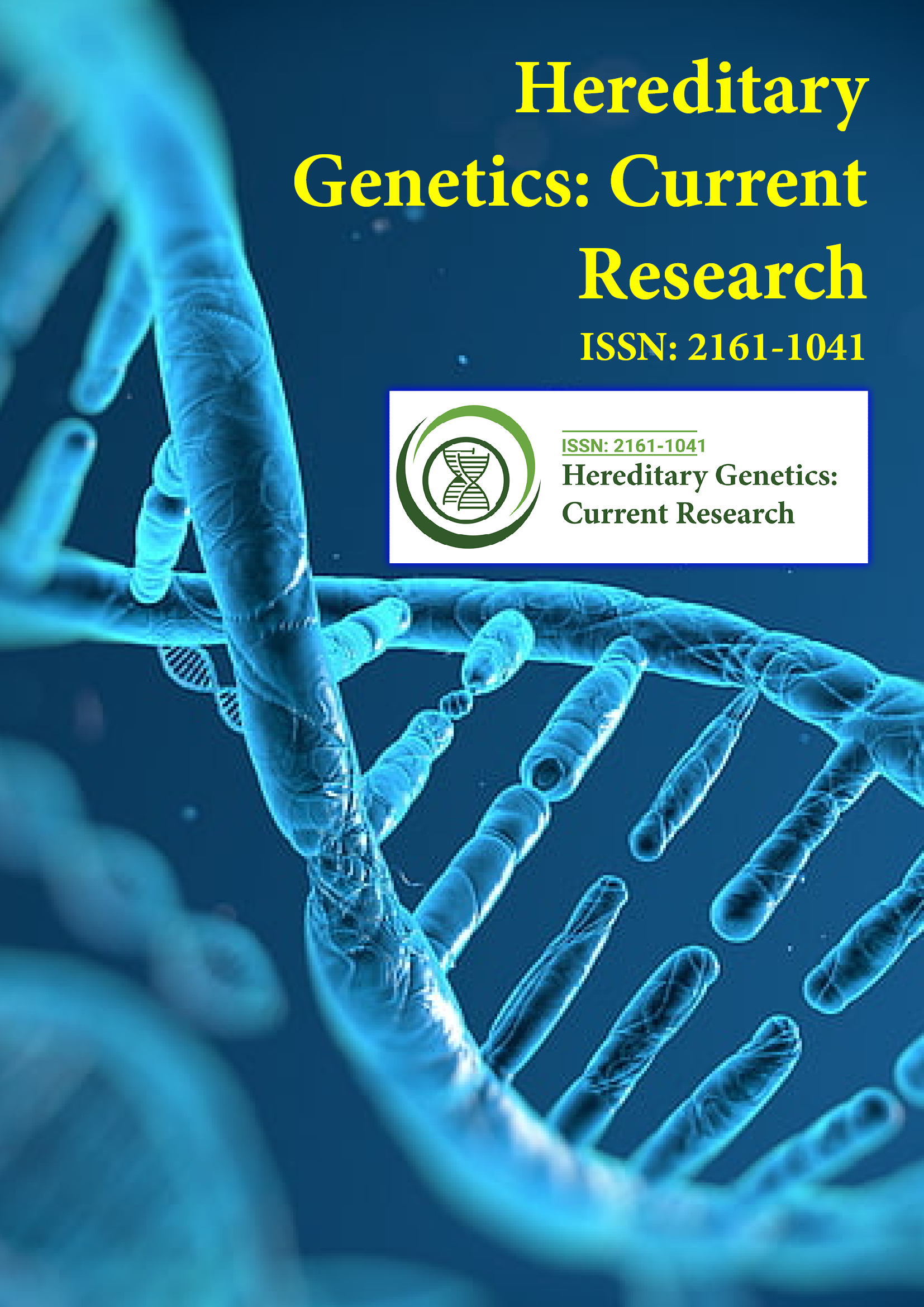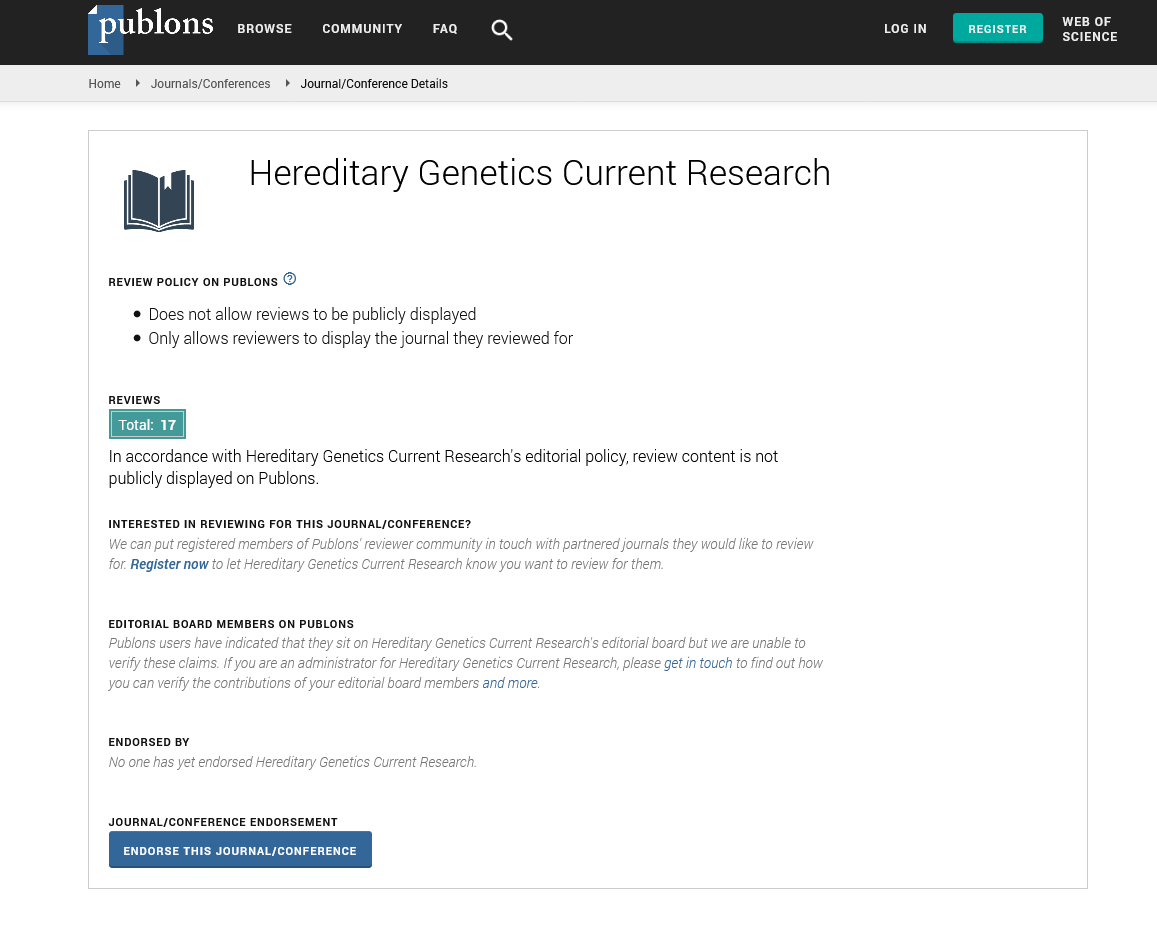Indexed In
- Open J Gate
- Genamics JournalSeek
- CiteFactor
- RefSeek
- Hamdard University
- EBSCO A-Z
- NSD - Norwegian Centre for Research Data
- OCLC- WorldCat
- Publons
- Geneva Foundation for Medical Education and Research
- Euro Pub
- Google Scholar
Useful Links
Share This Page
Journal Flyer

Open Access Journals
- Agri and Aquaculture
- Biochemistry
- Bioinformatics & Systems Biology
- Business & Management
- Chemistry
- Clinical Sciences
- Engineering
- Food & Nutrition
- General Science
- Genetics & Molecular Biology
- Immunology & Microbiology
- Medical Sciences
- Neuroscience & Psychology
- Nursing & Health Care
- Pharmaceutical Sciences
Opinion Article - (2024) Volume 13, Issue 1
Wheat Production: Role of Genetic Diversity in Overcoming Lodging Challenges
Antonio Shah*Received: 27-Feb-2024, Manuscript No. HGCR-24-26563; Editor assigned: 01-Mar-2024, Pre QC No. HGCR-24-26563 (PQ); Reviewed: 15-Mar-2024, QC No. HGCR-24-26563; Revised: 22-Mar-2024, Manuscript No. HGCR-24-26563 (R); Published: 29-Mar-2024, DOI: 10.35248/2161-1041.24.13.277
Description
Wheat is a staple crop critical for global food security, and its productivity is profoundly influenced by various factors, including genetic diversity, environmental conditions, and agricultural practices. Among these factors, lodging a condition where the wheat plants fall over before harvest poses a significant challenge affecting grain yield and quality. Equipment this issue and enhance wheat productivity, researchers and agronomists are focusing on controlling genetic diversity in wheat to coordinate lodging resistance with optimal grain yield. This approach represents a promising strategy to improve wheat cultivation and ensure a stable food supply.
Understanding lodging in wheat
Lodging in wheat occurs when plants fall over due to a combination of factors including weak stem structure, excessive rainfall, high winds, and over-fertilization. This phenomenon not only makes harvesting difficult but also leads to grain loss and reduced quality. Lodged plants are harder to thresh, and the resulting grain often suffers from increased moisture and fungal contamination, affecting its market value and usability. Traditional methods of combating lodging include adjusting agronomic practices such as planting density, row spacing, and nitrogen application. However, these approaches have their limitations and do not always provide consistent results. As a result, there is a growing interest in developing wheat varieties with inherent resistance to lodging through genetic improvement.
Genetic diversity and lodging resistance
In wheat this diversity can influence various traits including lodging resistance. Different wheat varieties exhibit varying degrees of susceptibility to lodging, largely due to differences in their genetic makeup. By leveraging this genetic diversity, researchers aim to identify and incorporate genes responsible for lodging resistance into new wheat cultivars. Recent advancements in genomics and molecular biology have enabled scientists to better understand the genetic basis of lodging resistance. Several key genes and Quantitative Trait Loci (QTLs) associated with stem strength and plant architecture has been identified. These genetic factors play crucial roles in determining the robustness of wheat plants and their ability to withstand lodging-inducing conditions. Breeding programs are now focusing on incorporating these resistance traits into highyielding wheat varieties. This process involves selecting parent lines with desirable genetic attributes and crossbreeding them to produce offspring with improved lodging resistance. Additionally, modern techniques such as Marker-Assisted Selection (MAS) and Genome Wide Association Studies (GWAS) are used to accelerate the identification and incorporation of relevant genes into breeding programs.
Balancing lodging resistance with grain yield
One of the main challenges in breeding for lodging resistance is ensuring that it does not come at the expense of grain yield. Historically, efforts to enhance lodging resistance have sometimes resulted in reduced yields due to trade-offs between stem strength and other agronomic traits. For example, breeding for shorter, sturdier plants might lead to reduced grain filling and overall yield potential. To address this challenge, researchers are employing a multifaceted approach that balances lodging resistance with optimal grain yield. This involves selecting for traits that not only enhance stem strength but also ensure efficient nutrient uptake, effective photosynthesis, and high grain-filling capacity. By focusing on these factors, breeders aim to develop wheat varieties that can maintain high yields while also being resistant to lodging. Several successful examples of integrating lodging resistance with high yield through genetic diversity can be observed in recent wheat breeding programs. For instance, the development of the 'Alpowa' and 'Earl' wheat varieties, which combine strong stem characteristics with high yield potential, demonstrates the effectiveness of this approach. These varieties have shown improved lodging resistance under various environmental conditions, resulting in more stable and higher yields. Another significant example is the application of genomic selection in wheat breeding. By analyzing the genetic makeup of wheat populations and selecting individuals with desirable traits, researchers have been able to develop new varieties that excel in both lodging resistance and grain yield.
Despite the progress made there are still challenges to overcome in coordinating lodging resistance with grain yield. One major challenge is the need for continuous monitoring and evaluation of new wheat varieties under diverse environmental conditions. Climate change and varying weather patterns can influence the effectiveness of lodging resistance traits, necessitating ongoing research and adaptation. Additionally, the integration of lodging resistance traits into wheat varieties must be done in a way that considers other important factors such as disease resistance, drought tolerance, and overall crop management. A holistic approach to wheat breeding that addresses multiple aspects of plant performance will be crucial for ensuring long-term sustainability and productivity. Leveraging wheat genetic diversity to coordinate lodging resistance and grain yield offers a promising approach to enhancing wheat production. By leveraging genetic diversity and employing advanced breeding techniques, researchers are making significant strides in developing wheat varieties that are both resistant to lodging and capable of delivering high yields. As the global demand for wheat continues to rise, these efforts will play a critical role in ensuring food security and enhancing agricultural sustainability.
Citation: Shah A (2024) Wheat Production: Role of Genetic Diversity in Overcoming Lodging Challenges. Hereditary Genet. 13:277.
Copyright: © 2024 Shah A. This is an open access article distributed under the terms of the Creative Commons Attribution License, which permits unrestricted use, distribution, and reproduction in any medium, provided the original author and source are credited.

